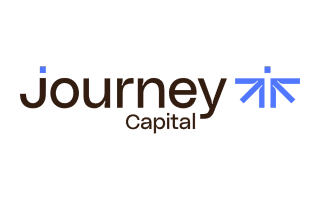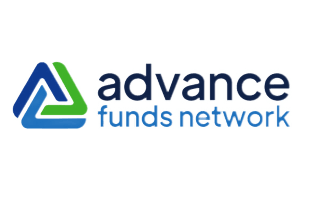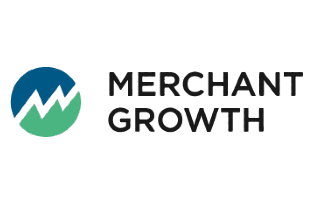Finder Score for business loans
To make comparing even easier, we came up with the Finder Score. Interest rates, fees and features across 10+ business loans are all weighted and scaled to produce a score out of 10. The higher the score the better the loan—simple.
In this guide, we take you through different financing options for trucking companies, how to compare lenders, plus some great tips to get you through the process.
Promoted for
Fast Financing

Promoted for
Term Loans

Promoted for
Flexible Loans

What business loan options should I consider for my trucking company?
Trucking companies tend to do big freight deliveries and charge customers large amounts at a time. With this type of revenue model, you might have a good portion of your business income tied up in invoices. That’s why we’ve listed two types of accounts receivable financing options as the first to look into.
- Invoice factoring. By selling your open invoices at a slight discount, you can receive cash from the lender who’ll then receive the full amount from your customer when the invoices are fulfilled. The lender will take a percentage of the invoice.
- Freight factoring. This is a type of invoice factoring designed specifically for trucking companies. You sell your invoice to the lender in exchange for receiving a percentage of the invoiced amount more quickly.
- Equipment loans. As the name indicates, these loans are specifically for equipment. You could use an equipment loan to finance new trucks and trailers, repair equipment and more.
- General purpose business loans. Use these loans for a wide variety of purposes so long as they’re related to business operations. General purpose loans typically come with terms of up to 20 years, with lenders offering amounts as little as $1,000 and as high as $1.25 million.
- Canada Small Business Financing Program (CSBFP) Loan. You can apply for these loans through a chartered bank, credit union or a caisse populaire. They are at least 75% backed by the Government of Canada. Your business must make under $10 million in revenue annually to be eligible for this program.
How do I decide which loan type is best for my business?
Now that you know your options, it’s time to figure out how to sort through them to choose the best one for your needs. Certain loans will offer a larger amount of funding, while others will offer a specific type of funding such as an equipment loan. Invoice factoring could be used for a wider array of purchases, while equipment loans are limited to purchasing equipment.
Another factor to consider is the loan term. Terms can vary among truck financing options. Invoice factoring has a finite term, and is paid off as soon as the invoices are paid — usually within a few weeks to a few months. Equipment and general purpose loans may be paid off over longer periods of time, such as five to 20 years.
Lastly, be sure to consider fees and costs. The interest rate won’t be your only cost and might not be the best factor to show the cost difference between loan types with varying repayment terms – instead, compare APRs. The annual percentage rate, or APR, will show all upfront costs including origination fees, application fees and the interest rate. However, it won’t include other fees like early repayment and late payment fees. While you’d be hard-pressed to find a business loan that doesn’t charge additional fees, you may have an easier time finding ones with more reasonable penalties than others.
Some lenders consider the transportation industry to be a high-risk industry. Before applying for a loan, consider contacting a lender to confirm whether or not your business is eligible.
Representative example: Kenji buys a fleet of trucks for his shipping business
Kenji, a resident of Ontario, runs a shipping company and is looking to replace six 2014 Isuzu NPR HD diesel trucks with new ones. He finds a 2020 model with a 14′ box priced at $76,500 per truck. Kenji is able to trade in his old Isuzu trucks for $11,500 each ($69,000) and makes an additional 20% down payment of $91,800 on the new trucks. He applies for a business loan to cover the remaining amount of $298,200.00 plus 13% HST on the purchase price less the trade-in values.
Both Kenji’s business and personal credit scores are solid, plus he can secure the loan with some of his other business assets. He is therefore approved for a loan with competitive terms. Along with the cost of the loan, he also pays around $1,800 to register all 6 trucks with the province of Ontario – this includes the cost of license plate stickers and vehicle permits (he can reuse the plates from his old trucks, so he doesn’t need to buy new ones).
| Purchase price of new truck | $76,500.00 per truck ($459,000.00 for 6 trucks) |
| Loan type | Business loan (term loan) |
| Loan amount | $348,900.00 |
| Interest rate (APR) | 7.90% |
| Loan term | 5 years |
| Additional fees | 3.00% origination fee ($10,467.00) |
| Monthly payment | $7,057.75 |
| Total loan cost | $423,465.00 |
*The information in this example, including rates, fees and terms, is provided as a representative transaction. The actual cost of the product may vary depending on the retailer, the product specs and other factors.
What do I need to apply?
Each lender will have its own requirements, and some have more than others. Here are some of the most common documents you’ll need to apply for truck financing:
- Current truck ownership and registration information. You may be required to show proof of your business assets, as well as licensing and registrations for trucks that you already own.
- Proof of business income. Certain lenders will require a minimum monthly revenue, but almost all reputable lenders require proof of income for approval.
- Business plan. Detailed and clear business plans can help boost your chances of securing financing for your trucking company. By showing a clear vision, you can sell your potential to pay off the amount you’re looking to borrow, as well as show your plan to drive your business to success.
- Personal documents. Personal identification documents such as your government-issued ID, Social Insurance Number (SIN), personal and contact details, and information about your personal finances are likely necessary to complete your application.
How do I increase my chances of approval for a business loan?
While there’s no way to guarantee approval, try these four tips to improve your chances of getting your application approved:
- Have adequate revenue history. While a history of success is not a guarantee of future success, it’s a valuable indicator to most lenders.
- Highlight your business’s features – but be truthful about shortcomings. No business is perfect, and it’s much better to establish trust with your lender by being honest about the areas your business struggles with.
- Your down payment will change with your experience. Your business history may determine how much you’re required to put down as a down payment for certain types of loans, such as auto loans.
- Find a lender that works with the industry. Experts understand the field better, and can better identify a good business history or plan from a lousy one.
Haul your business to success with these six tips
- Check load boards. Whether you’re just starting to find clients or you’re looking to fill out a schedule, load boards can help. Load boards are marketplaces where companies can find customers looking to transport freight.
- Invest in great equipment and maintain it. Once you get the best truck you can afford, make sure you keep on top of maintenance. Regular maintenance can help cut the cost of potentially expensive repairs by preventing them from happening in the first place.
- Buckle down on your plan. Don’t just use the business plan as a way to get truck financing. Build your company a roadmap to success and stick to it – as long as it works for you.
- Fuel cards are your friend. It may be worth investing in fuel cards (also known as fleet cards) for your drivers or negotiating them into a deal with a factoring finance company. Potential savings of $0.07 per litre at the pump can add up quick, and getting the fuel cards before the haul can keep your cash flow in the positive.
- Bid smart. Make sure to read and reread the proposal before you make your bid. Itemizing all of the potential expenditures and variables can help you avoid undercutting yourself.
- Strive for the highest customer satisfaction. Internal and external customers should be left as happy as possible, as often as possible. Whether it’s a dispatcher contacting a truck or a client contacting your sales rep, make sure your employees are trained on how to deliver the best experience.
Bottom line
Your next cash flow solution or truck could be just around the corner. Take your time and review your finances, your business plan and your needs before settling with any one lender. Shop around, compare your business financing options and make the decision that’s best for your business.
Frequently asked questions
More guides on Finder
-
Get a farm loan: Agriculture financing and beginning farmer loans
Explore farm loan options in our detailed guide to loans, grants and government funding for agribusinesses.
-
Business loans for tariff-impacted companies
Loans and financial assistance for Canadian businesses impacted by Trump’s tariffs.
-
5 Clearco Alternatives in Canada
Check out the pros and cons of five Clearco alternatives to find financing that suits your business.
-
Compare business loans for cleaning services
Explore different business loans for cleaning services to start a new business or expand one.
-
Fast business loans in Canada: Funds in 24-72 hours
See which business lenders can approve a fast business loan. Turnaround times can be as short as one day.
-
Compare business loans for eBay sellers
Compare business loans for eBay sellers and get customized financing to grow your online storefront.
-
Compare bank & credit union business loans
Banks offer the most lucrative business loans and financing options on the market. However, getting approved can be challenging, especially if you don’t fit the bank’s traditional mold.
-
Compare business loans for dental practices
Learn how to get a business loan for dental practices to start or expand your business.
-
How to get a business loan for a child care centre
Learn how to secure a business loan to purchase or expand your child care centre.
-
Current Business Loan Interest Rates in Canada
Compare business loans interest rates in Canada, and find out how much business financing could cost you.

